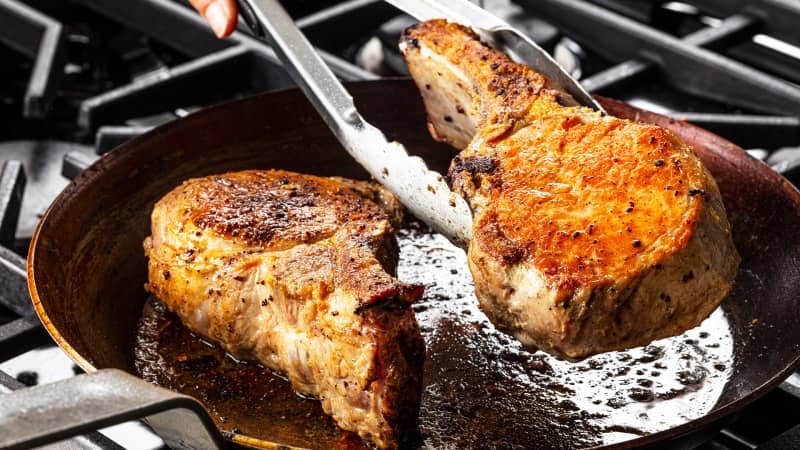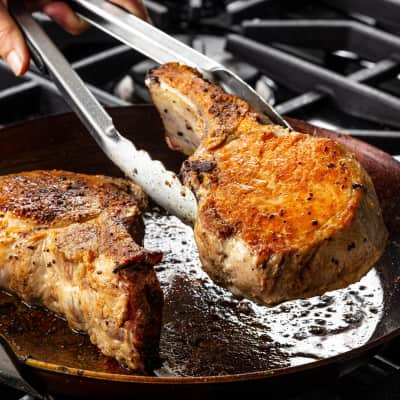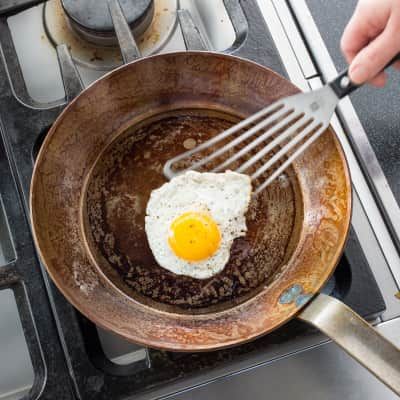Searing steaks and chops on the stovetop inevitably causes smoke to billow and grease to splatter. Plus, every approach to pan-searing runs up against the same fundamental challenge: how to ensure that the exterior of the meat develops a deeply browned crust just as the interior comes up to temperature. Pulling it off is tricky because the outside needs lots of heat to brown, while the inside can’t take more than minimal heat before it overcooks.
Do You Cold-Sear? Learn Our New Favorite Way to Cook Steaks and Chops
Published Apr. 1, 2022.

That’s why the classic approach—blasting each side of the meat with heat in a well-oiled, ripping-hot pan—doesn’t work well. While it’s fast and produces a great crust, a wide band of gray, overcooked meat can form just below the crust. What’s more, the combination of all that high heat and fat is exactly what causes smoke and splatter.
Sign up for the Cook's Insider newsletter
The latest recipes, tips, and tricks, plus behind-the-scenes stories from the Cook's Illustrated team.
Cook in Nonstick or Carbon Steel, not Stainless Steel
Slick nonstick or carbon steel surfaces prevent the steaks from sticking without oil and allow more savory browning to stick to the meat, not the pan.
Don’t Add Oil to the Pan
Fat smokes and splatters at high temperatures; minimizing the amount in the skillet is the best way to avoid those problems. (This is especially true of well-marbled strip and rib-eye steaks, which exude plenty of their own fat during cooking.)
Don’t Preheat
Adding steaks and chops to a “cold” (not preheated) pan allows their interiors to heat up gradually and evenly.
Start High; Then Go Low(er)
An initial burst of high heat drives off moisture so that the meat sears; lowering the heat ensures that the interior and exterior finish cooking at the same time and prevents smoking.
Flip Often
Flipping the meat every 2 minutes cooks it from the bottom up and the top down, so its interior warms evenly and its crust builds up gradually.
Cold-Searing on an Electric Stovetop
Electric stoves can be slow to respond to a cook’s commands. This can pose a problem with our cold-searing method, which requires an initial blast of high heat followed by a quick turndown to medium heat. However, there’s a simple work-around: As you cook your steaks or chops on high heat on one burner, preheat a second burner to medium heat. After the initial sear, transfer the pan to the medium-heat burner and continue cooking.



